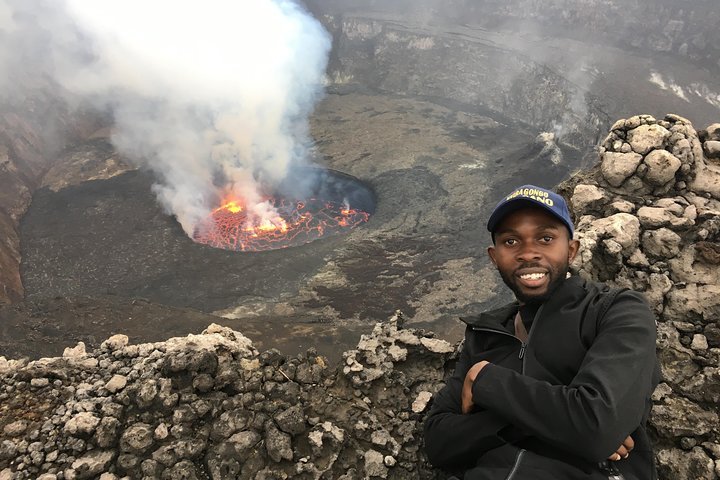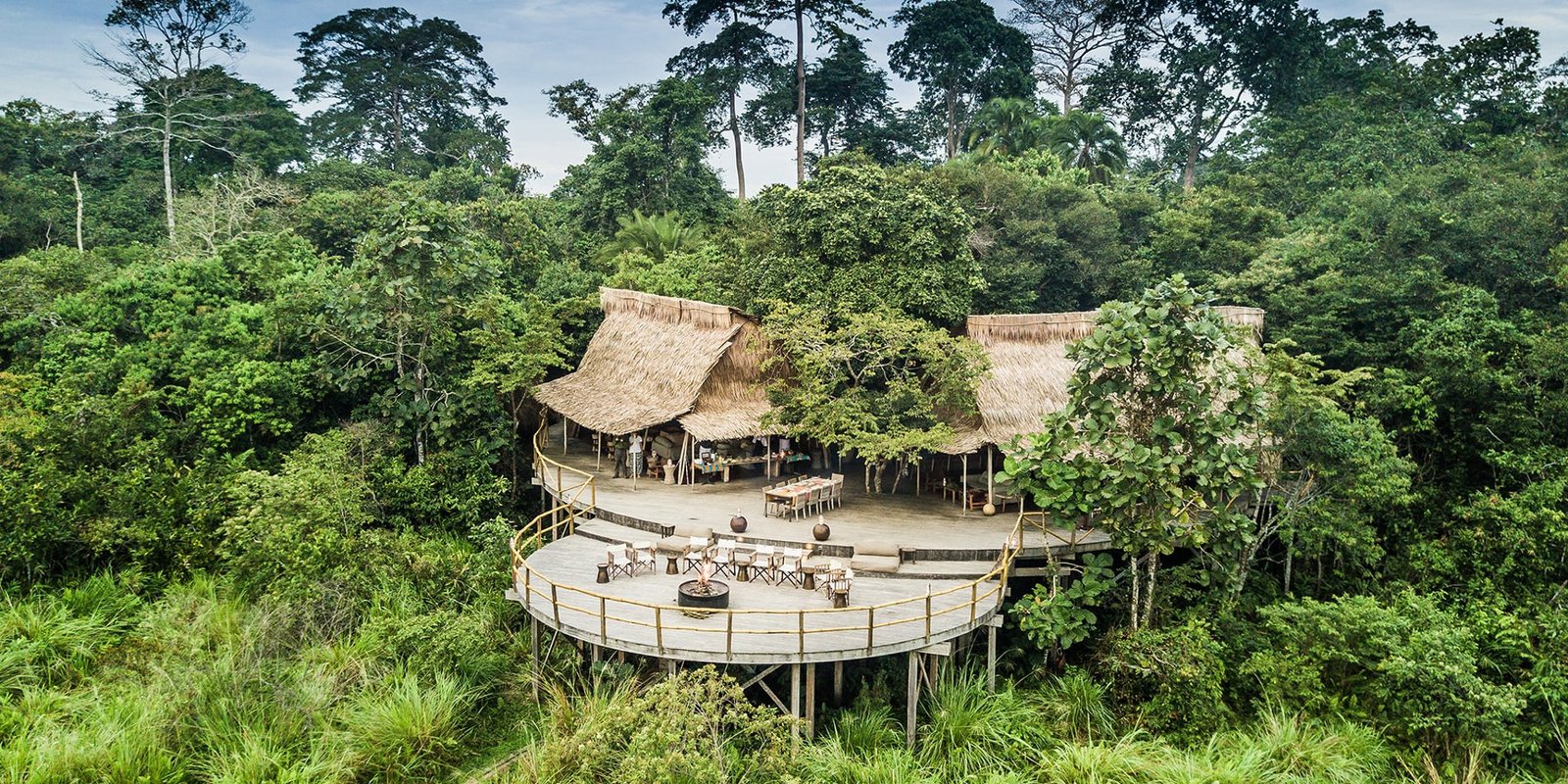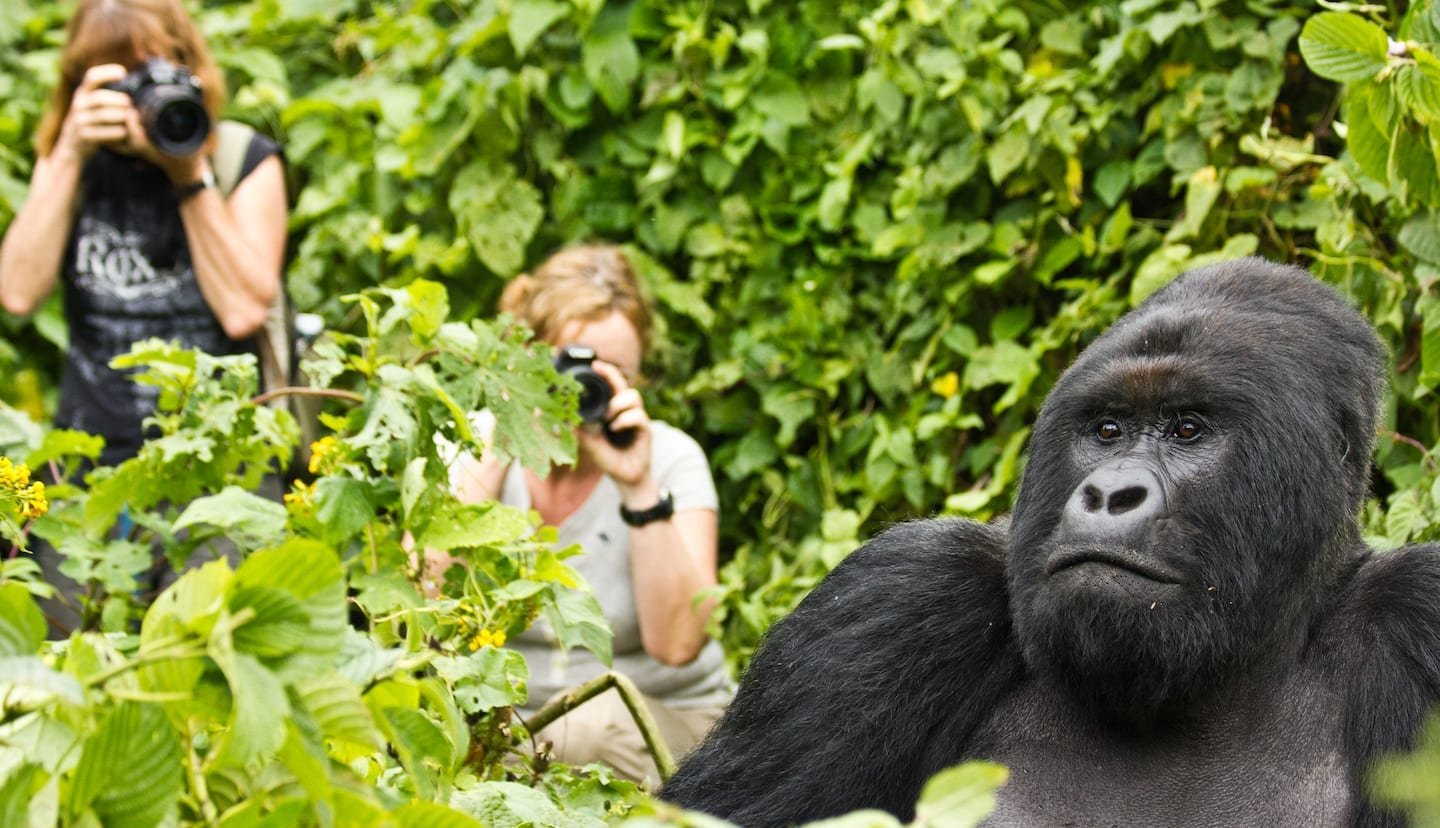Mount Nyiragongo is a renowned tourist destination in the Republic the Congo. The Nyiragongo volcano is one of eight volcanoes located in the Virunga conservation zone, situated in the eastern part of the country and overlookingunga National Park. Other notable volcanoes in this region include Mountisimbi, Mount Bisoke, Mount Muhabura, Mountabyinyo, Mount Mikeno, Mount Gahinga, and Mount Nyamagira. The Nyiragongo volcano rises to an of3,470 meters and typically requires approximately 5 to 6 to reach the summit.
The volcanic lava lake of Mount Nyiragongo is particularly fascinating and remarkable as one of the world’s active volcanoes In 201, officials Virunga National Park initiated hiking excursions tourists to Mount Nyiragongo. Visitors often combine mountain gorilla trekking with hikes to the Nyiragongo volcano. Hiking Mount Nyiragongo provides a unique and extraordinary experience for those seeking a once-in-a-lifetime mountain adventure. It is the only location Africa where visitors can observe a lava lake up close. Additionally, one may find interest in about Mount Kilimanjaro or in about climbing Mount Kilimaro.

Mount Nyagongo can be accessed from various locations; however for security reasons, Gisenyi town Rwanda is the most advisable option Visitors will be transported 20 kilometers from Gisen to the Rwanda-DR Congo border before Goma. A significant black cloud, visible from Goma, serves as a reminder of the volcano’s last in 2022. The lava, which previously flowed at high temperatures, has since cooled and into black rock. Afteroma, visitors will be taken to the trailhead Kibati hamlet. Prior to commencing the Mount Nyiragongo volcanic hike, participants will receive information on what to expect. The briefing will cover all essential aspects of trekking the Nyirongo Volcano, including, designated stopping points, and necessary items to bring. for the final portion of the journey, hikers are required to proceed in groups throughout the majority of the activity.

Hiking Mount Nyiragongo can be exceedingly for individuals who areprepared and out of shape. One must be ready to navigate steep hills and difficult Porters may be hired for a fee at the starting point Kibati Ranger Post to assist with carrying items After briefing at 9 a.m participants gather as a with cooks and fellow hikers. ascent of Mount Nyiragongo consists of stages. The initial section involves climbing through lower-altitude areas. Those who are not emotionally or physically equipped often surrender at this. Following the first significant break, the altitude increases presenting new. The second half of the journey includes traversing lava rocks. Individuals with suitable hiking footwear should this segment manageable.
Upon the second section, hikers must not only small stones but also slippery and altitude conditions. By the fourth section, the slopes of mountain increasingly steep, accompanied by colder temperatures due to the high. In addition to the cold, is common in area; therefore, warm clothing and raincoats are advisable. The final section is both the steepest the shortest. The cabins become visible from this point, providing motivation for the most exhausted hiker. reach this stage are free to complete the remainder of the trail their own pace. You be interested in our four Nyagongo hiking package.
At the peak of the volcano, twelve summit huts are available, each equipped with two single mattresses for clim to rest. huts contain a mattress and a cushion. Hikers are provided with snacks breakfast, dinner, water, and sleeping bags during their stay at the cabin. Due to strong winds, the summit be extremely cold, necessitating warm clothing. The and porters will assist in preparing hot tea and coffee to help warm the trekkers. The permit fee covers the cost of an overnight stay at the summit, where the scent of boiling and bubbling lava can be detected from the cabins.

- Rain Jacket
A lightweight rain jacket is essential to avoid hindrance during your hike. It will protect you from severe downpours, keeping you dry and comfortable even in wet conditions. - Hiking Boots
Quality hiking boots with a solid grip (rubber soles) are a must. They should be weather-resistant, comfortable, and keep your feet warm throughout the trek. - Warm Clothes and Sleeping Bag
As you ascend higher, temperatures drop significantly, making warm gear essential. Bring items such as a sweater, rain pants, jacket, long underwear, thick socks, and a cap to safeguard yourself against the cold at the summit. A high-quality sleeping bag will ensure a comfortable overnight stay. - Water and Packed Lunch
Hiking Mount Nyiragongo can be exhausting, requiring ample hydration and nourishment. Carry a sufficient supply of water and a packed lunch to keep your energy levels high during the challenging trek. - Hire a Porter
Hiring a porter at the volcano’s base costs around $15 per day. Porters are well-experienced and adept at handling heavy loads, assisting you through difficult sections of the hike. They provide valuable support during the steep and rugged terrain. - Hat and Sunscreen
A hat and sunscreen are essential, especially during sunny or dry conditions, as they will protect you from the sun’s intensity. Additionally, these items are useful during heavy rain to shield your skin from excessive moisture. - Camera and Binoculars
To capture stunning views and unique experiences, bring a high-quality camera or smartphone. Binoculars are also useful for spotting wildlife and enjoying breathtaking vistas, especially as you descend the mountain. - Backpack
A rainproof backpack is necessary for carrying essential electronics like phones, cameras, and other gear. Make sure your backpack is sturdy and has enough space for all your items. - Portable Charger
Keeping devices like iPads, laptops, and phones charged during the trek can be challenging due to limited power supply at the summit. A portable charger will ensure your electronics remain operational throughout the hike. - Torch
At the summit, electricity is limited, and solar power is inconsistent. A torch is crucial for navigating the summit huts, bathrooms, and kitchens safely.
These essentials will ensure a smooth and enjoyable experience while hiking Mount Nyiragongo.

The Ideal Time to Hike Mount Nyiragongo
Hiking Mount Nyiragongo is possible throughout the year, but most visitors prefer the dry season for a smoother and more enjoyable experience. The dry season typically lasts from June to September, as well as December, January, and February. During the rainy season, which occurs from March to May and October to November, the trails become slippery and more challenging to navigate, making the hike more difficult for walkers.
Be in Good Shape
Climbing Mount Nyiragongo is a physically demanding activity that requires a good level of fitness. As you ascend, the mountain grows steeper, and descending also presents its own challenges, including knee and ankle discomfort due to the strain on joints. Additionally, the weather conditions at higher altitudes can become harsh, so physical preparation is essential. If you are prone to drastic weather changes, it is especially important to ensure you are well-prepared.
Mental Preparation
Mental preparedness is just as crucial as physical fitness. The hike can be physically and emotionally challenging, requiring dedication and resilience to complete. Engaging in shorter treks on rocks or hills near your home can help condition both your mind and body for the journey ahead.
Hiking with a Stick
Using a hiking stick can improve balance and reduce pressure on your knees, especially while navigating steep slopes. Climbing sticks are typically available at the beginning of the hike.
Keep Your Possessions Safe
Ensure your valuables—such as cameras, money, and electronic devices—are kept close at all times, even in shared accommodations with other hikers.
Yellow Fever Vaccination Card
It is mandatory to present a valid passport and yellow fever vaccination card to enter Congo. Without this documentation, entry may be denied.
N.B.: For a more enriching and unforgettable experience, consider combining your hike of Mount Nyiragongo with gorilla trekking in Congo.



